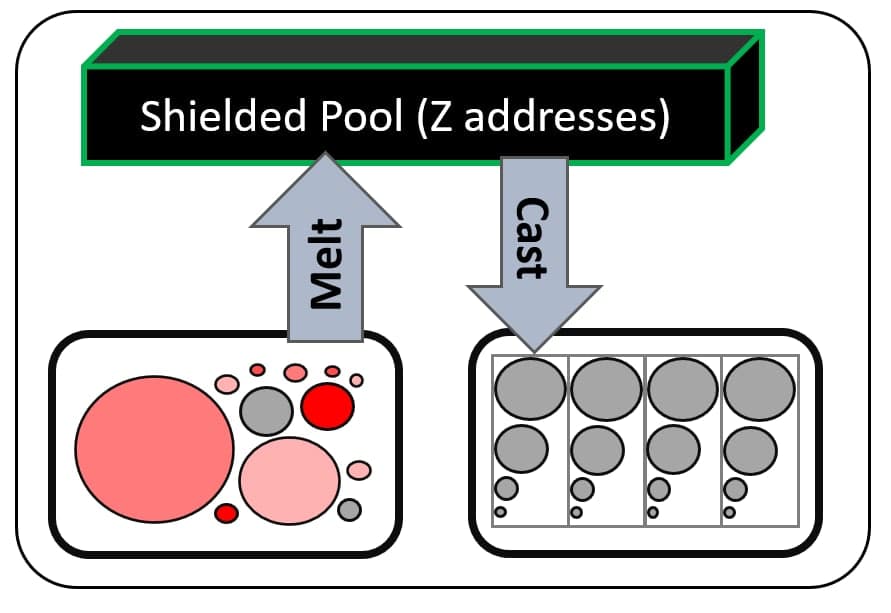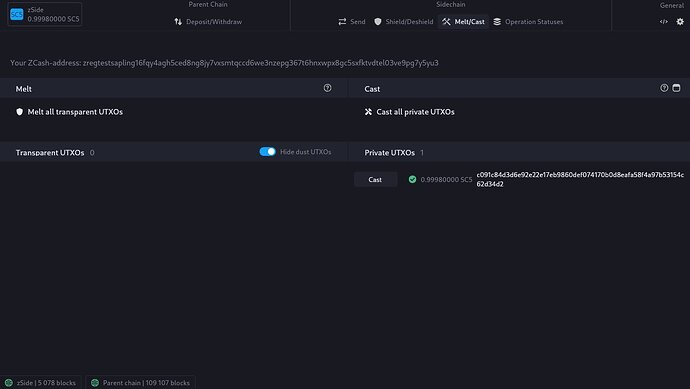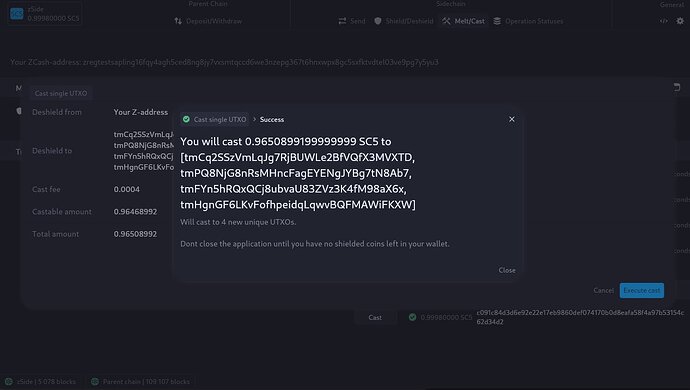What is Drivechain?
Drivechain allows you to create different types of sidechains in which withdrawals are approved by miners. Users have the freedom to experiment with different features by sending bitcoin from main chain to sidechain and withdraw from it later.
Since changing consensus rules on bitcoin will become difficult with time, sidechains seems to be the best way possible to scale, improve privacy, user experience etc.

Is Drivechain possible without BIP 300 and 301?
Yes, it is possible. A proof of concept that uses OP_CAT and some introspection opcodes to achieve this: GitHub - mr-zwets/upgraded-SHA-gate
Bytecode generated by the compiler has these opcodes:
OP_4 OP_PICK
OP_0 OP_NUMEQUAL
OP_IF
OP_INPUTINDEX OP_0 OP_NUMEQUALVERIFY
OP_0 OP_OUTPUTVALUE
OP_0 OP_UTXOVALUE OP_SUB 1027 OP_GREATERTHAN OP_VERIFY
OP_0 OP_OUTPUTBYTECODE OP_0 OP_UTXOBYTECODE OP_EQUALVERIFY
OP_2DROP OP_2DROP OP_DROP
OP_1
OP_ELSE
OP_4 OP_PICK
OP_1 OP_NUMEQUAL
OP_IF
OP_8 OP_PICK
OP_10 OP_PICK OP_CAT
OP_11 OP_PICK OP_CAT
OP_12 OP_PICK OP_CAT
OP_13 OP_PICK OP_CAT
OP_HASH160 OP_EQUALVERIFY
OP_0 OP_2ROT OP_SWAP OP_6 OP_ROLL
OP_3 OP_8 OP_ROLL
OP_9 OP_ROLL
OP_10 OP_ROLL
OP_11 OP_ROLL
OP_12 OP_ROLL
OP_5 OP_CHECKMULTISIGVERIFY
OP_BIN2NUM 2808 OP_ADD
OP_CHECKLOCKTIMEVERIFY OP_DROP
OP_3 OP_PICK OP_SIZE OP_NIP 0x1f OP_NUMEQUALVERIFY 0x0200001f
OP_4 OP_ROLL OP_CAT OP_8 OP_CAT
OP_TXLOCKTIME OP_8 OP_NUM2BIN OP_CAT
OP_ACTIVEBYTECODE 0x2c OP_SPLIT OP_NIP OP_CAT
OP_INPUTINDEX OP_0 OP_NUMEQUALVERIFY
OP_0 OP_UTXOVALUE 0xe803 OP_SUB
OP_0 OP_OUTPUTVALUE OP_NUMEQUALVERIFY
0xa914 OP_SWAP OP_HASH160 OP_CAT
0x87 OP_CAT
OP_0 OP_OUTPUTBYTECODE OP_EQUAL
OP_NIP OP_NIP OP_NIP
OP_ELSE
OP_4 OP_PICK
OP_2 OP_NUMEQUAL
OP_IF
OP_1 OP_OUTPOINTTXHASH
OP_6 OP_PICK OP_HASH256 OP_EQUALVERIFY
OP_0 0x20 OP_NUM2BIN OP_6 OP_PICK
0x29 OP_SPLIT OP_DROP 0x0100000001
OP_ROT OP_CAT 0xffffffff OP_CAT OP_EQUALVERIFY
OP_1 OP_OUTPOINTINDEX OP_0 OP_NUMEQUALVERIFY
OP_5 OP_ROLL 0x2b OP_SPLIT OP_NIP
OP_3 OP_SPLIT OP_DROP OP_BIN2NUM
OP_ROT OP_BIN2NUM OP_GREATERTHAN OP_VERIFY
OP_ROT OP_BIN2NUM
OP_4 OP_ROLL
OP_IF
OP_DUP OP_1ADD OP_NIP
OP_ELSE
OP_DUP OP_2 OP_SUB OP_NIP
OP_ENDIF
OP_2 OP_NUM2BIN
OP_2 OP_SWAP OP_CAT
OP_ACTIVEBYTECODE OP_3 OP_SPLIT OP_NIP OP_CAT
OP_INPUTINDEX OP_0 OP_NUMEQUALVERIFY
OP_0 OP_UTXOVALUE 0xe803 OP_SUB
OP_0 OP_OUTPUTVALUE OP_NUMEQUALVERIFY
0xa914 OP_SWAP OP_HASH160 OP_CAT
0x87 OP_CAT
OP_0 OP_OUTPUTBYTECODE OP_EQUAL
OP_NIP OP_NIP OP_NIP
OP_ELSE
OP_4 OP_ROLL
OP_3 OP_NUMEQUALVERIFY
OP_ROT 0x17 OP_SPLIT OP_BIN2NUM
OP_1 OP_OUTPUTVALUE OP_OVER OP_NUMEQUALVERIFY
OP_1 OP_OUTPUTBYTECODE
OP_ROT OP_EQUALVERIFY
OP_ROT OP_BIN2NUM 0xe007 OP_ADD
OP_CHECKLOCKTIMEVERIFY OP_DROP
OP_ROT OP_BIN2NUM
OP_0 OP_GREATERTHANOREQUAL OP_VERIFY
OP_0 0x1f OP_NUM2BIN 0x0200001f OP_SWAP OP_CAT
OP_ACTIVEBYTECODE 0x23 OP_SPLIT OP_NIP OP_CAT
OP_INPUTINDEX OP_0 OP_NUMEQUALVERIFY
OP_0 OP_UTXOVALUE OP_ROT OP_SUB 0xe803 OP_SUB
OP_0 OP_OUTPUTVALUE OP_NUMEQUALVERIFY
0xa914 OP_SWAP OP_HASH160 OP_CAT
0x87 OP_CAT
OP_0 OP_OUTPUTBYTECODE OP_EQUAL
OP_NIP
OP_ENDIF
OP_ENDIF
OP_ENDIF
In this script some introspection opcodes are used:
OP_INPUTINDEX
OP_OUTPUTVALUE
OP_UTXOVALUE
OP_OUTPUTBYTECODE
OP_UTXOBYTECODE
OP_OUTPOINTTXHASH
These can be emulated with OP_CAT, OP_CHECKSIGFROMSTACK and a few other basic opcdoes.
Drivechain using BIP 300 and 301
BIP 300 implmentation introduces an opcode OP_DRIVECHAIN and six new blockchain messages:
- M1. Propose New Sidechain
- M2. ACK Proposal
- M3. Propose Bundle
- M4. ACK Bundle
- M5. Deposit – a transfer of BTC from-main-to-side
- M6. Withdrawal – a transfer of BTC from-side-to-main
Sidechains are first proposed (with M1), and later acked (with M2) for creation. This process resembles Bip9 soft fork activation.
BIP 301 describes blind merged mining and introduces 2 messages:
- BMM Accept – How h* enters a main:coinbase. When Mary “accepts” a BMM Request, Mary is endorsing a side:block.
- BMM Request – Simon offering money to Mary, if (and only if) she will Endorse a specific h*. When Simon broadcasts a BMM Request, Simon is attempting a side:block.
h* : sidechain’s merkle root hash
Blind Merged Mining (BMM) allows miners to mine a sidechain, without running its node software (ie, without “looking” at it, hence “blind”). Instead, a separate sidechain user runs their node and constructs the block, paying himself the transaction fees. He then uses an equivalent amount of money to “buy” the right to find this block, from the conventional layer1 Sha256d miners.
Criticism
Some developers have written about their opinions on Drivechain. Its not possible to cover all of them. I will focus on the blog post written by Peter Todd in 2023 and Paul Sztorc’s response to it.
I agree with Paul’s response and want to add a few points about mining centralization issues shared in the blog post:
- Stratum v2 does not decentralize anything. It could be considered an improvement over v1 but mining pools can still reject block templates.
- Mining is inherently centralized in bitcoin for different reasons and will remain the same until more pools in different countries, more hardware manufacturers and braidpool gains some traction.
- If covenant proposals are activated instead of BIP 300/301, we would end up with MEV issues that affect mining decentralization more than sidechains.
Sidechain templates
There are some sidechains availalble for testing and you can try them using launcher. I tried zcash sidechain and like the privacy, UX etc.
I got some coins for the main chain using the faucet. Did fake coinjoin spending equal amount inputs to my own addresses. Used one of the UTXO to deposit funds from main chain to sidechain. This could be followed by other users as well to avoid privacy issues with the deposit transaction however it can also be deposited directly. My goal was to try melt-cast feature and compare it with payment pools that could be enabled with covenants.
Conclusion
Drivechain will be possible on bitcoin with or without BIP 300/301 in a few years. We need to do more research and avoid trusting other opinions to decide if they should be activated with BIP 300/301 for evaluating their scaling, privacy etc. benefits.



